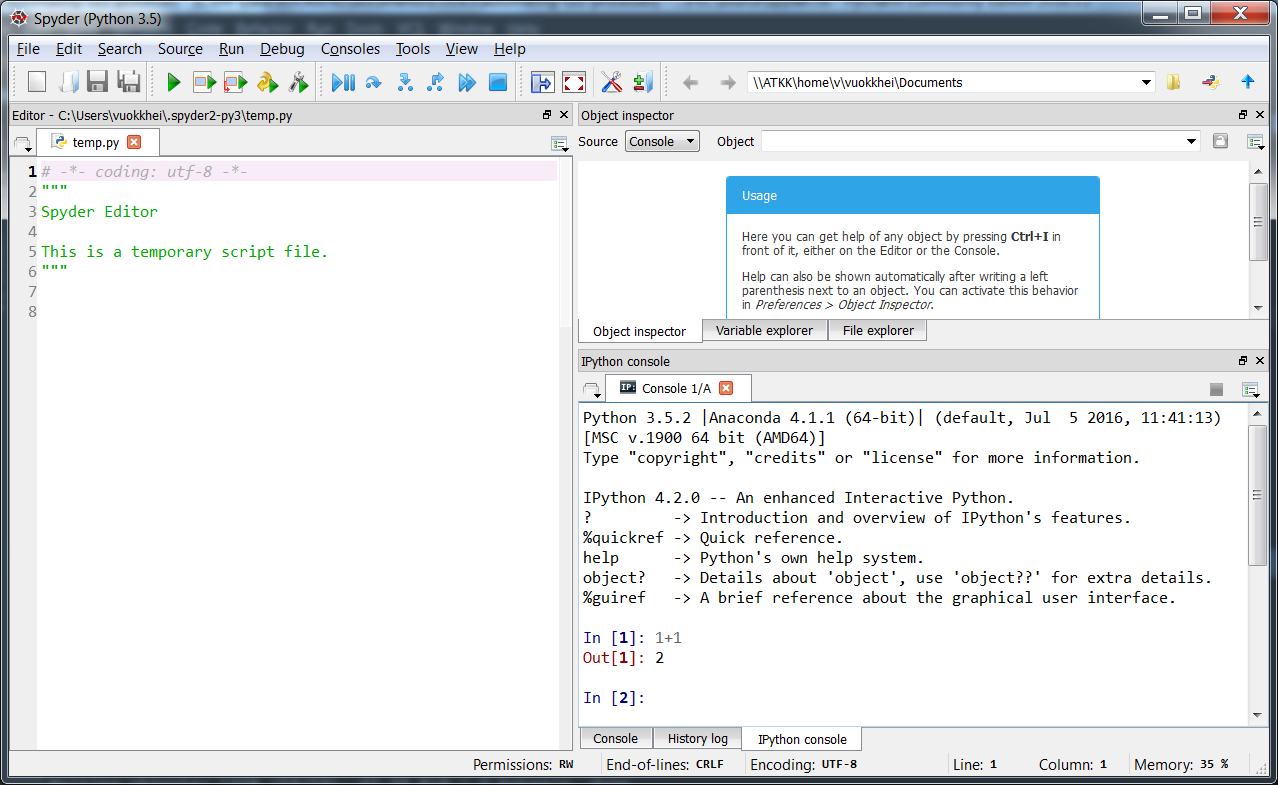
It is worth mentioning that you can edit the variables with other GUI based editors and you can learn more about how they interact with the filesystem from within the IDE. Moreover, you will be happy to learn that the console supports Matplotlib figures integration and allows you to explore the variables that are created during the execution of a file.

The utility packs an interactive IPython console with extensive debugging and vast workspace so that you can focus on evaluating the code you write in the editor. The tool can be particularly useful for development environments focused on research, data analysis and scientific packages in general. It was created in order to provide you with MATLAB-like features in a small but still powerful and easy to use software package. This is of course faster than the long load of "Anaconda Navigator" > switch environment > launch Spyder answer).Spyder is a useful integrated development package that can help you in your Python software creation process.


(I have also tested the installation with pip, but for Python 3.4 or older versions, it breaks with the library dependencies error that requires manual installation.)Īnd now to run Spyder with Python 3.4 just type: spyderįor a normal opening, use "Anaconda Prompt" > activate myenv > spyder (then the "Anaconda Prompt" must stay open, you cannot use it for other commands, and a force-close will shut down Spyder). Now you have to install spyder additionally for the new environment with this command (after the activation of the environment with the command above): conda install spyder as a shortcut for "source")Īctivate myenv # (in windows - note that you should be in your c:\anaconda2 directory) To activate it : source activate myenv # (in linux, you can use.

There is an option to create virtual environments in Anaconda with required Python version.


 0 kommentar(er)
0 kommentar(er)
